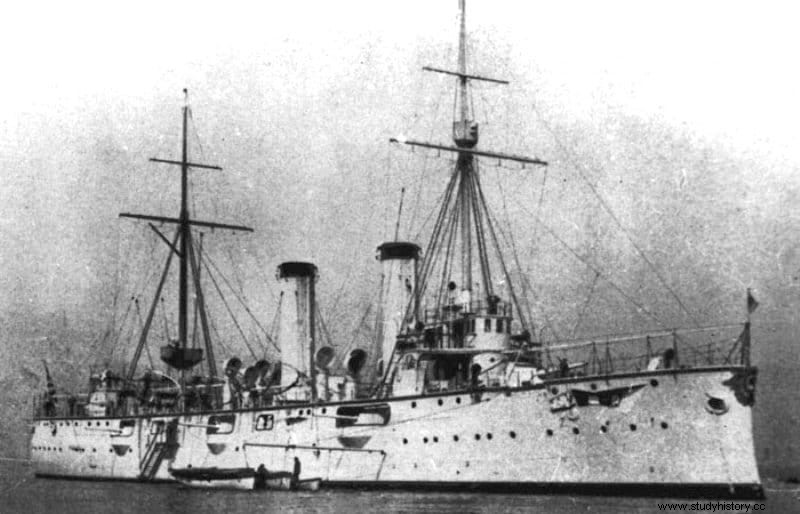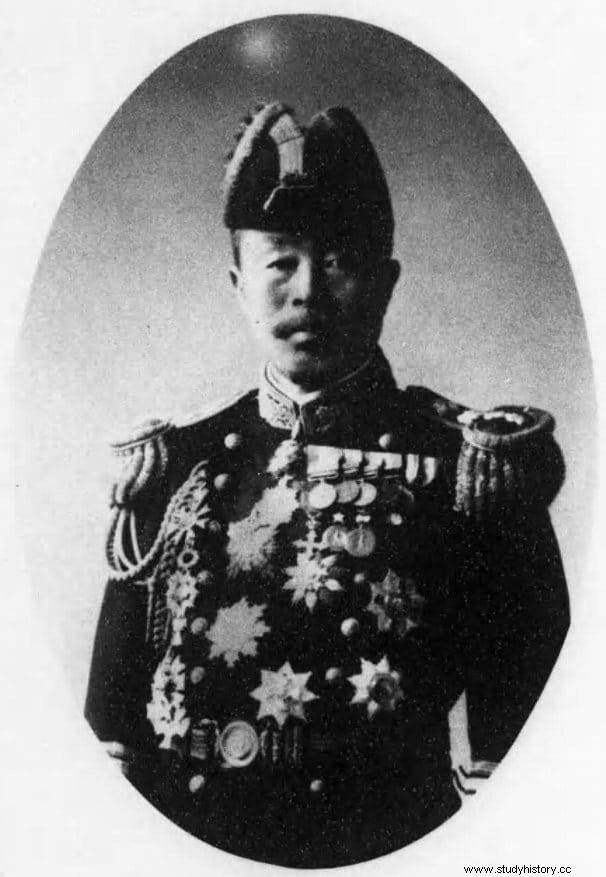In the Kalkara Naval Cemetery in Malta, there is a memorial that remembers the 68 Japanese sailors buried there, who lost their lives aboard the destroyer Sakaki, torpedoed in the Mediterranean by an Austrian submarine.
The story begins on January 30, 1902, when representatives of the United Kingdom and Japan sign a military cooperation and mutual aid treaty in London by which both countries undertook to help each other in case of war.
The only exceptions included in the agreement implied that the United Kingdom would not help Japan in the event of a confrontation with the United States, and that Japan would never enter a strictly European war.

The agreement was intended to jointly oppose the attempt at Russian expansion in China and the Pacific, and was to be renewed in 1905 and 1911. So when the First World War broke out in 1914, the agreement was in force. With the British focused on European operations, the responsibility for controlling the Pacific fell to the Japanese.
They did not limit themselves to patrolling, but also cooperated in the escort of the British ships that transported the ANZAC troops (Australia, New Zealand and Canada) to the theaters of operations of the conflict. They also harassed and persecuted the ships of the Triple Alliance (German Empire, Austria-Hungary and Italy) that operated in the area, as happened with the German Vice Admiral Von Spee's Squadron that was heading to the battle of the Malvinas.

The United Kingdom, despite the Japanese inhibition clause in the agreement in case of war in Europe, repeatedly insisted on its ally declaring war on Germany. Japan accepted, as long as it was guaranteed that it could occupy the German territories in the Pacific.
On August 23, 1914, Japan formally declared war on Germany and two days later on Austria-Hungary. On September 2, Japanese forces landed in China, surrounding the city of Tsingtao, under German control, and began the conquest of the insular German possessions (the Mariana, Caroline and Marshall Islands) with hardly any resistance.
During the siege of Tsingtao, the Japanese Navy launched, being the first to do so in history, several air strikes from aircraft carriers. On November 7, the city surrendered, leaving the Pacific in Japanese hands.
During the following years, the United Kingdom repeatedly insisted, this time urging Japan to intervene in the European theater, which they resisted, alleging a lack of military capacity. But finally, on February 10, 1917, they relented and agreed to send a fleet to the Mediterranean.
Thus, on April 16 of that year, a Japanese flotilla made up of the cruiser Akashi and eight other destroyers, under the command of Rear Admiral Sato Kozo, arrived in Malta, crossing the Suez Canal, escorting the British transport Saxon . During the rest of the war the Japanese presence would increase until reaching the number of 20 ships of different classes.
From Malta they were in charge of escorting allied troop transports and carrying out anti-submarine operations, since the Germans were sinking allied ships at a truly alarming rate.
Among other notable episodes, they helped rescue troops from the Transylvania transport. , torpedoed off the French coast on May 4, 1917. 413 men died in the disaster, but the combined intervention of the French, Italian (which had already changed sides) and Japanese navies managed to save more than 2,500 .
The Japanese navy suffered hardly any casualties in the Mediterranean, except due to accidents. The only exception occurred on June 11, 1917, when the destroyer Sakaki was hit by a torpedo launched by the Austro-Hungarian submarine U27 off the coast of Crete. 68 Japanese sailors died.
However, despite the damage sustained, the ship remained afloat and managed to return to Malta for repairs. The dead were buried in the Kalkara Naval Cemetery, where a memorial was erected, which is still maintained today by the Commonwalth War Graves Commission.
In total, Japanese ships in the Mediterranean carried out 788 operations during the First World War, escorting more than 700,000 British and allied troops, even participating in the transport of troops from Egypt to Thessaloniki, for the autumn offensive of 1918.
At the end of the war, the Japanese fleet collaborated in the inspection of the surrendered enemy ships, and even in their concentration in Scapa Flow, Scotland, where they would be beached and destroyed. Japanese sailors from the Mediterranean fleet would also participate in the victory parades in Paris and London in 1919.
On May 15 of that year, 1919, the last Japanese ships in Malta set course for home, arriving in Yokosuka on July 2.
Different authorities, including Winston Churchill, who was First Lord of the Admiralty at the time, praised the Japanese work and dedication. It is known that even the commanders of some ships committed suicide by the Hara-Kiri method, embarrassed to lose one of the ships they escorted.
As for the alliance treaty between the United Kingdom and Japan, despite the services rendered and the insistence of some prominent British military officers, it was definitively canceled in 1921.
